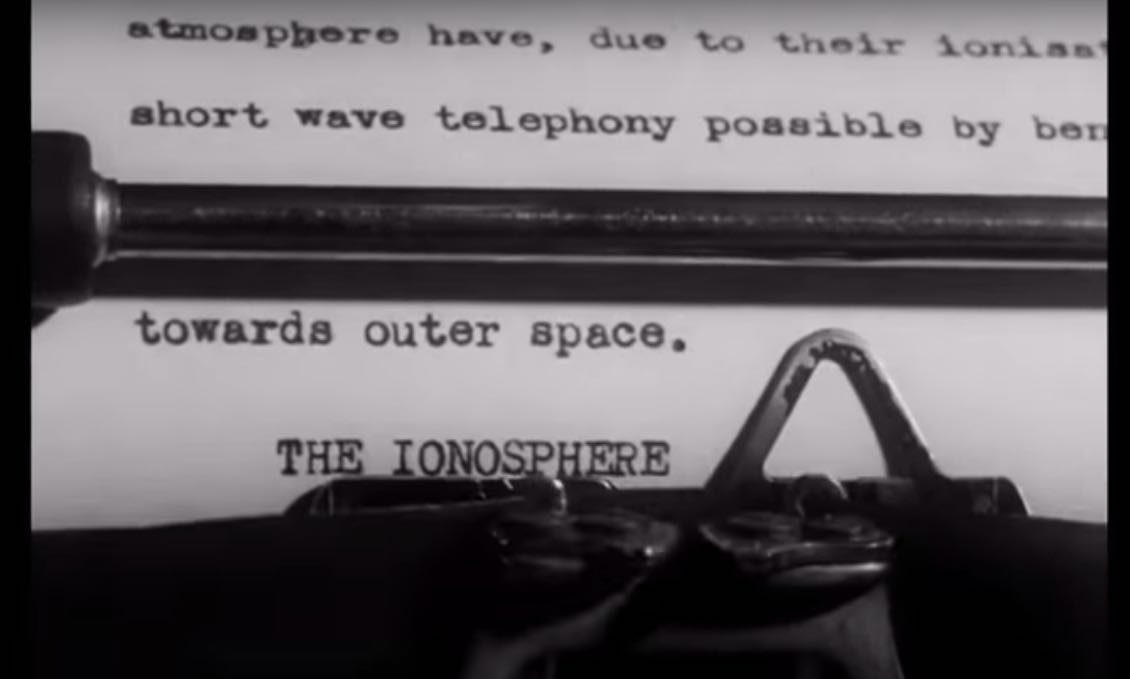 Many thanks to SWLing Post contributor, Mark (AE2EA), who shares the following video from the Antique Wireless Association. Here’s the video description:
Many thanks to SWLing Post contributor, Mark (AE2EA), who shares the following video from the Antique Wireless Association. Here’s the video description:
Cooling Radio Station was at the UK end of a point-to-point, shortwave signal beamed from Lawrenceville, New Jersey. The site of the station was carefully selected as the antenna, MUSA (Multiple Unit Steerable Antenna), upon which it depended to receive the incoming transmission, had to be: directly aligned with Lawrenceville NJ, USA; two miles long; comprised of an array of 16 individual rhombic antenna; and have an area of three miles in front of the MUSA that would be free from radio interference. The 16 rhombic antenna were strung between 60ft high telegraph poles; each side was 315ft long with internal angles of 140 degrees. The signal from each antenna was sent to the station via a core coaxial cable sheathed in a watertight copper tube and buried in a central trench.
This vital communications link, between the US and British governments at the very highest level, operated from 1942 until the early 1960s. Although a transatlantic telegraph cable had been in use since 1866, there was no telephone cable until 90 years later, in 1956. An initial shortwave system was set up in 1929, but was of poor quality. The Post Office set up and ran Cooling Radio Station solely for the reception side of two way, shortwave, voice channels with the United States. Land was purchased in 1938 and the building was completed in 1939. The receiver used 1,079 valves and was considered to be the most complex radio built. It was connected to the adjacent MUSA (Multiple Unit Steerable Antenna) and could receive 4 incoming radio telephone channels. It was officially in use on the 1st July 1942. This may well have been because German intelligence services were able to break the scrambler / encryption device available in 1939. By 1943, Bell Laboratories in the US had developed SIGSALY, a far more secure scrambler system. (This system was so well screened and secure that German records captured at the end of WW2 showed that they were not aware that transmissions were person to person, direct voice contact.) SIGSALY was installed in the basement of Selfridges department store in Oxford Street with extensions to 10 Downing Street, the Cabinet War Rooms and the US Embassy amongst others. The US transmitter was located at Lawrenceville, New Jersey, while UK transmissions were made from Rugby to the US receiver at Manahawkin, New Jersey.

For those who are metric, including wavelengths in metres…
3 km long; comprised of an array of 16 individual rhombic antenna; and have an area of 5 km in front of the MUSA that would be free from radio interference. The 16 rhombic antenna were strung between 18 m high telegraph poles; each side was 96 m long with internal angles of 140 degrees.
If the transmission frequency was known then it can be determined how many wavelengths each side is. At 1 MHz the wavelength is 300 m, at 10 MHz it is 30 m (3 wavelengths per side) and at 30 MHz it is 10 m or close to 10 wavelengths.
Video:
6 mile = 10 km
6 Rhombics over 1.2 km
16.48 m = 18.14 MHz
Path length at sea level is Rugby to Manahawkin, New Jersey = 5558 km, Lawrenceville, New Jersey to Cooling UK = 5693 km
Digital Radio Mondiale overcomes the problems of the ionosphere described because a lower signal to noise ratio is required and the phasing problem is overcome by sending the data in bursts and ignoring all but the first data in each burst.
If I had that antenna I’d be sooooo happy. 🙂
[/South Park reference]
great short, nothing can beat the thrill of erecting antennas. way back when I was a ham the longest I did was a 120m long wire for 160/80 in our back yard. it’s a pity that non real audio of the station was in the film.